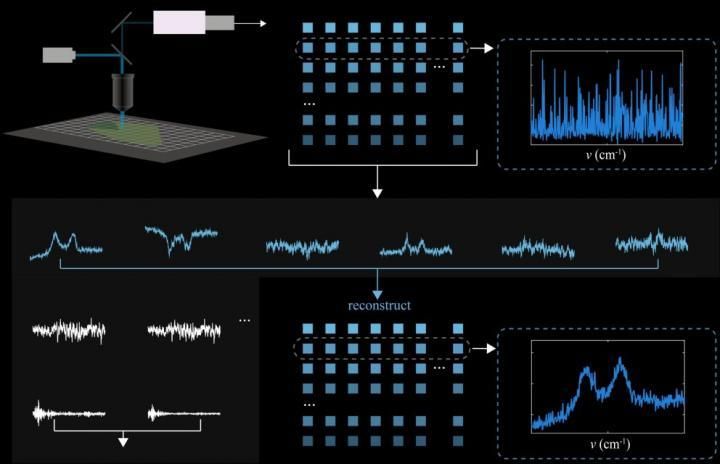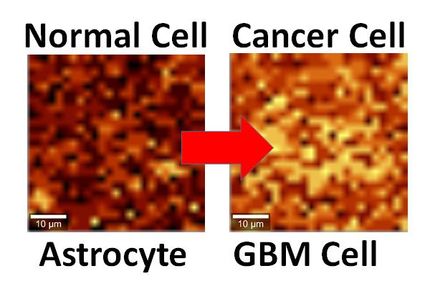Graphene mapping 50 times faster
graphene is always raising high expectations, as a strong, ultrathin, two-dimensional material that could also be the basis for new components in information technology. There is huge need for characterization of graphene devices. This can be done using Raman spectroscopy. Laser light is sent to the material sample, and scattered photons tell us about the rotations and vibrations of the molecules inside, and thus about the crystal structure. On average, only around 1 in 10 million photons is scattered in this way. This not only makes it hard to detect the right information, it is also very slow: it may take half a second to image one single pixel. The question is if Raman still remains the best option, or if there are better alternatives. UT researchers Sachin Nair and Jun Gao keep Raman spectroscopy as a starting point, but manage to improve the speed drastically: not by changing the technique itself, but by adding an algorithm.

Denoising algorithm improves Raman scanning speed.
©Science China Press
Noise reduction
This algorithm is not unknown in the world of signal processing and it is called Principal Component Analysis. It is used to improve the signal-to-noise ratio. PCA determines the characteristics of noise and those of the 'real' signal. The larger the dataset, the more reliable this recognition is, and the clearer the actual signal can be distinguished. Apart from that, modern Raman instruments have a detector called electron-multiplying charge-coupled device (EMCCD) that improves the signal-to-noise-ratio. The net result of this work is that processing one pixel doesn't take half a second, but only 10 milliseconds or less. Mapping a single sample doesn't take hours anymore. An important feature for vulnerable materials like graphene oxide is that the intensity of the laser can be lowered two or three orders of magnitude. These are major steps ahead for getting a fast grip on the materials' properties.
Multi-purpose
Except for graphene, the improved Raman technique can also be used for other two dimensional materials like germanene, silicene, molybdenum disulfide, tungsten disulfide and boron nitride. Use of the algorithm is not limited to Raman spectroscopy; techniques like Atomic Force Microscopy and other hyperspectral techniques could also benefit from it.
Original publication
See the theme worlds for related content
Topic World Spectroscopy
Investigation with spectroscopy gives us unique insights into the composition and structure of materials. From UV-Vis spectroscopy to infrared and Raman spectroscopy to fluorescence and atomic absorption spectroscopy, spectroscopy offers us a wide range of analytical techniques to precisely characterize substances. Immerse yourself in the fascinating world of spectroscopy!

Topic World Spectroscopy
Investigation with spectroscopy gives us unique insights into the composition and structure of materials. From UV-Vis spectroscopy to infrared and Raman spectroscopy to fluorescence and atomic absorption spectroscopy, spectroscopy offers us a wide range of analytical techniques to precisely characterize substances. Immerse yourself in the fascinating world of spectroscopy!
























































